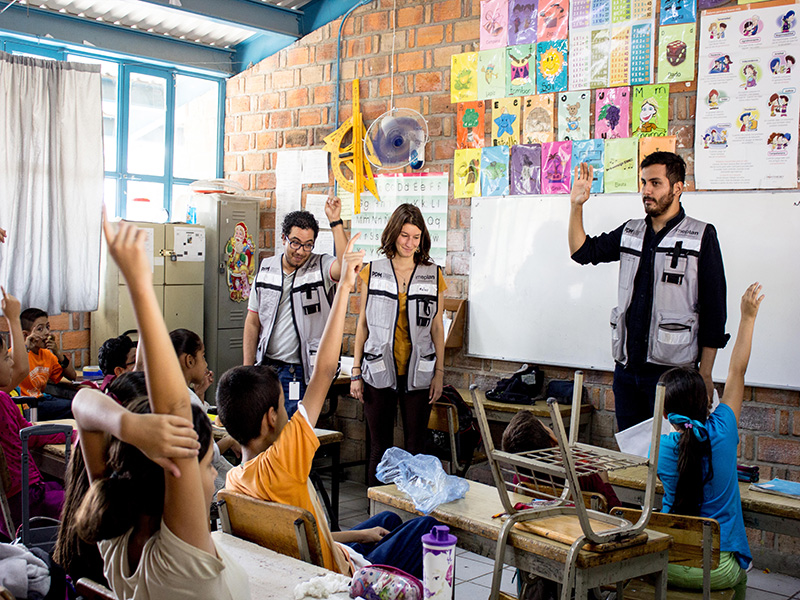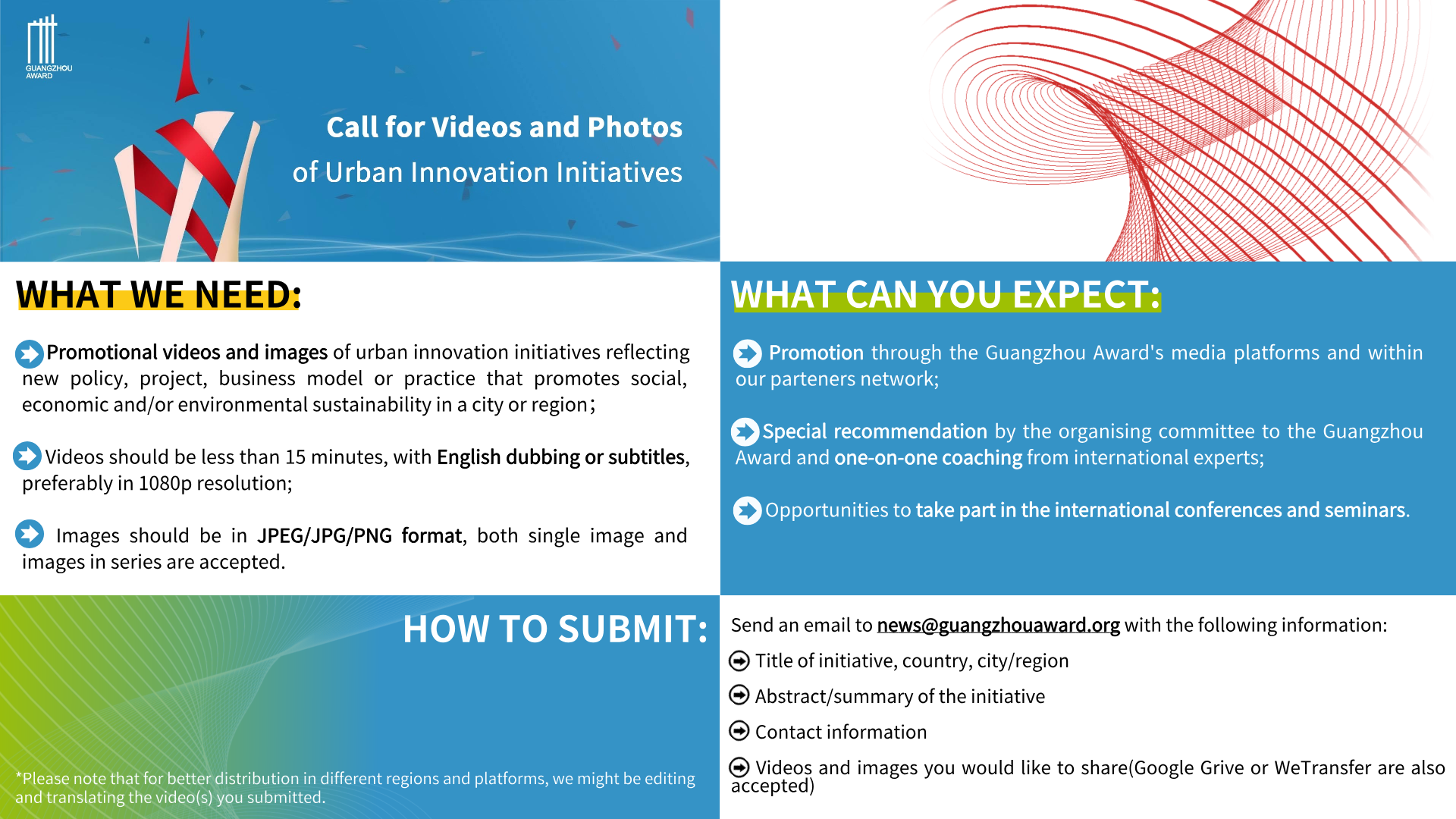Guadalajara, Mexico
Citizen-Led Metropolitan Coordination of Guadalajara

BASIC CITY DATA
Population size: 4,427,618
Surface area (sq.km): 3265.46
Population density (people/sq.km): 0.14
GDP per capita (USD): 17206.00
ABSTRACT
As a metropolitan area, Guadalajara has faced a vast range of strategic barriers that could not be solved by the individual municipal government bodies that compose it. These included environmental, social, economic and planning issues that inevitably would affect the neighboring areas and beyond each municipality. The metropolitan Area of Guadalajara decided to take initiative and reform its scheme of planning and view the problems from a metropolitan point of view instead of a municipal individual one.
This scheme and planning initiative was formalized into an institute called IMEPLAN (Metropolitan Institute of Planning), the first one of its kind in the history of Guadalajara and Mexico. The central idea of IMEPLAN is to involve its citizens, experts and municipalities into participatory planning process through collaborative roundtables, workshops and an educational curriculum, which engage all aforementioned players into dialogue in order to imagine, innovate and plan at a metropolitan scale the city we wish to live in.
BACKGROUND INFORMATION
IMEPLAN’s initiative takes place through the Metropolitan Coordination Act for the State of Jalisco, which establishes the obligation of the metropolitan scheme to generate tools for city planning. These instruments generated through IMEPLAN include: The Metropolitan Development Program, the Metropolitan Plan of Land Use, among others. These instruments use methodologies and indicators to promote the scope of Sustainable Development Goals at the local government level, along with strategies of the International Labor Organization and the Economic Commission of Latin America.
ORIGINS
The Metropolitan Area of Guadalajara (AMG) has experienced exponential growth. It has exceeded all limits without a comprehensive plan governing its expansion. There has been a strong movement of the population towards the periphery, leaving empty and uninhabited centers, with poor infrastructure planning, reduced opportunities and services for the citizens, high rates of vandalism and transportation issues, along with high rates of contamination and lack of green spaces. The lack of political will and decision making has generated a discontinuity in the development of the city, with great economic, environmental, social and cultural inequalities.
In 2042, Guadalajara will celebrate the 500th year anniversary of its foundation. By then, the Metropolitan Plan of Land Use and Metropolitan Development Program will have changed the course of our growth. Municipal plans and programs will be aligned into the same model that promotes accessibility, equity and closeness along with adequate public and green spaces. Metropolitan services will be of the same quality and efficiency in all metropolitan municipalities and most importantly, a strong participatory activity will be at the center of all decision making of the city.
Guadalajara’s coordination is achieved through the cooperation of the 9 metropolitan municipalities and the State government, who make up the Board of Metropolitan Government, which through consultation and democracy, decide the next steps as a complete and comprehensive city. As its right arm is the citizen sector through the Citizen Metropolitan Council.
IMEPLAN’s funding mechanisms work through the following financial budgetary components:
Basic Municipal Regular contributions of the metropolitan municipalities, assessed by a formula derived from the Metropolitan Fund, which aims to finance the basic functions of IMEPLAN as the administrative body and other bodies of Metropolitan Coordination, subject to indexation in accordance with CPI annualized, that is, contributions that fund the professional services of the Institute staff and office costs.
Complementary contributions: they are approved by the municipalities and the State Government to finance the development of studies, specific projects, planning instruments or coordination mechanisms.
Our regulatory framework also allows funding through social agencies or private, national and international sector to fulfill its objective.
INNOVATIVE ASPECTS
IMEPLAN’s initiative is considered revolutionary given that it is the first scheme of its kind to be passed through legislation and approved in consensus by its 9 municipalities for its establishment and implementation as a metropolitan body, and for having public participation in the very center of its processes. Such process has never been experienced before in the country.
In several Mexican states they have enacted laws and created institutions to effect regular intergovernmental relations between the governments of the states and municipalities around conurbations and metropolitan processes. Highlighted experiences, that aimed to create a metropolitan vision and body, include the creation of the Management Programme Valley of Mexico, the Development Plan Toluca Valley, the Law of Coordination for the Metropolitan Development of the State of Hidalgo, the Urban Development Law of the State of Nuevo Leon, and the Land Code for the state and the municipalities of Guanajuato, but the scheme of the coordination Metropolitan Area of Guadalajara is the only body that was created out ofthe efforts of the civil society and that has gained the support of political parties and the totality ofthe metropolitan municipalities, that has created a consensus for the continuity of the efforts.
The innovation is applied at policy, strategy and planning levels, given that all 9 municipalities must take in consideration the Metropolitan Plan of Land Use and the Metropolitan Development Plan along with the upcoming legal documents that are being built and published through IMEPLAN as policy and reference for strategy, planning decisions and initiatives.
DESIRED CHANGE OR OUTCOME
The Metropolitan Coordination Scheme aims to develop a close, compact, connected and equitable city, by achieving a polycentric urban model. Public services will be managed by metropolitan agencies that will work with collaboration of the local governments under the topics defined in the metropolitan agenda.
On one hand, the rector city program will be the Metropolitan Development Program, which addresses all areas of progress for the city. This program defines the real need of citizens, as it is being developed through participatory planning. On the other hand, the Metropolitan Plan of Land Use defines the criteria and development areas at a full-scale metropolitan scope, for the first time in the history of Guadalajara. While opting for generating a polycentric city model, the POTmet allows to control urban sprawl, consolidate the urban area and reduce the negative impacts of urban chaotic development.
Finally, all processes and information that IMEPLAN sets forth are available to the public for consultation and monitoring. Moreover, IMEPLAN takes on efforts to involve the population in training and consultation, giving them the ability to participate solidly in the decision making process at the metropolitan level.
Although the law doesn’t establish the obligation of the IMEPLAN to generate measurement systems, all of the plans and programs, include strategies that asses their accomplishment. These strategies are implemented by the 9 municipalities and their advancement is measured by IMEPLAN.
A system of indicators that measure the development of the polycentric model, that evaluates and conditions its growth to guarantee that the centers become sustainable communities, is being developed. A measurement system like this has never been used in Mexico.
At the time, a center of territorial information is being finalized, including the history of planning instruments and specific topics such as density, dispersion, consolidation and urban aptitude of all the municipalities, that gives us immediate specific analysis of the city.
Another notable instrument of all, was the Metropolitan Planning Guide to which the Metropolitan Area of Guadalajara was chosen by the level of progress achieved, same as it has been working under the supervision of the SEDATU and is intended to be used as a tool to standardize the planning methodology.
An educational curriculum is being developed to accompany the construction of this systems, in order to build capacity in the citizens to use this information for a stronger and coherent participation in the process of metropolitan management, this curriculum include workshops with children and youth, specialized conferences and talks as well as territorial data use training.
It contributes in the way that it will reduce significantly the impacts of the current chaotic urban growth and disarticulated work, which is considerable knowing that 60% of the population lives in urbanized zones. The strategies provided by the instruments include a Green Metropolitan System that will ensure the protection of natural areas, and creation of green spaces in order to meet the recommended amount per capita by the World Health Organization. These initiatives will entail the reduction of resource inequality, poor social and economic and environmental conditions throughout all different rural, urban and periurban areas.
Guadalajara is building a reputation of the city where decisions are made with the citizens through participatory planning, that assures the truthfulness of the necessities that the policies try to overcome, breaking with this, decades of impost government mechanisms.
LEARNING ASPECTS
The Metropolitan Planning Institute of Guadalajara Metropolitan Area (IMEPLAN) is an intermunicipal decentralized public body (OPD), with legal personality, its own assets, technical and managerial autonomy in the exercise of its power.
IMEPLAN promotes effective metropolitan management through evaluation in the provision of public services and municipal functions in the metropolitan area of Guadalajara (AMG), and the analysis and recommendations for their convergence.
IMEPLAN is a key element in the implementation process of decentralized planning and long term, with technical, from a holistic perspective; with emphasis on development planning and land use planning, risk management and systematization of the metropolitan information.
Its constitution as an autonomous technical body aims to strengthen management of strategic projects and financial resources to improve the provision of public services on a metropolitan scale.
IMEPLAN is a public agency responsible for intermunicipal development and proposes mechanisms and instruments for professionals, coresponsible and transparent planning that contribute to a socially inclusive, economically sustainable, environmentally balanced and territorially ordered metropolitan development.
In addition, IMEPLAN is recognized as a professional, efficient and effective organization in fulfilling its responsibilities as the technical entity responsible for coordinating the metropolitan planning that helps to improve the quality of life of the inhabitants and their opportunities for prosperity in the area Guadalajara metropolitan.
Its objective is to develop and propose instruments for metropolitan planning, studies and project proposals and coordination mechanisms instances of metropolitan coordination, and intervene in all phases of metropolitan policy coordination in the field of its response to the accelerated attributions. As would be considered the process of urban transformation in the world’s new challenges of managing these generated dispersed urban centers. The metropolitan area of Guadalajara has taken important steps in building a coordination scheme based on citizenship, Law Metropolitan Coordination, which establishes the characteristics and powers of three metropolitan bodies that make up the coordination scheme: The Citizen Council Metropolitan, the Metropolitan Coordination Board and the Metropolitan Planning Institute. it is the very basis of the scheme, the result of work of organizations of local civil society that promoted the existence of a metropolitan agenda and instances of metropolitan coordination, the work of the metropolitan authorities is based on participatory planning exercises, active public consultation and educational path, which keeps citizens at the center ofdecision making at the metropolitan level.
RELEVANCE TO SUSTAINABLE DEVELOPMENT GOALS
Goal 1: End poverty in all of its forms
Goal 2: End hunger, achieve food security and improved nutrition and promote sustainable agriculture
Goal 3: Ensure healthy lives and promote well-being for all ages
Goal 4: Ensure inclusive and equitable education and promote life-long learning opportunities for all
Goal 5: Achieve gender equality and empower all women and girls
Goal 6: Ensure availability and sustainable management of water and sanitation for all
Goal 7: Ensure access to affordable, reliable, sustainable and modern energy for all
Goal 8: Promote sustained, inclusive and sustainable economic growth, full and productive employment and decent work for all
Goal 9: Build resilient infrastructure, promote inclusive and sustainable industrialization and foster innovation
Goal 11: Make cities and human settlements inclusive, safe, resilient and sustainable
Target 1: Access for all to adequate, safe and affordable housing and basic services and upgrade slums
Target 2: Access to safe, affordable, accessible and sustainable transport systems for all
Target 3: Participatory, integrated and sustainable human settlement planning and management
Target 4: Safeguard cultural and natural heritage
Target 5: Reduce deaths and number of people affected by disasters with particular focus on the poor and people in vulnerable situations
Target 6: Improve air quality and manage municipal and other wastes
Target 7: Universal access to safe, inclusive and accessible green and public spaces, in particular of women, children older persons and persons with disabilities
Target 8: Support positive economic, social and environmental links between urban, peri-urban and rural areas
Target 9: Improving resource efficiency, mitigation and adaptation to climate change, resilience to disasters and implement holistic disaster risk management
Goal 12: Ensure sustainable consumption and production patterns
Goal 13: Take urgent action to combat climate change and its impacts
Goal 15: Protect, restore and promote sustainable use of terrestrial ecosystems, sustainably manage forests, combat desertification, and halt and reverse land degradation and halt biodiversity loss
Goal 16: Promote peaceful and inclusive societies for sustainable development, provide access to justice for all and build effective, accountable and inclusive institutions for all


 test
test Urban Innovation in China | Hainan: Transforming Mangroves into “Golden Groves”
Urban Innovation in China | Hainan: Transforming Mangroves into “Golden Groves” In Focus | Empowering the “She” in the Family
In Focus | Empowering the “She” in the Family In Focus | The World Earth Day: Planet vs. Plastics
In Focus | The World Earth Day: Planet vs. Plastics




















 Tel: +86 20 3780 4434
Tel: +86 20 3780 4434 Email: info@guangzhouaward.org
Email: info@guangzhouaward.org Address: Rm 1609, FuLiXinTianDi, No.307 Guangzhou Dadao Zhong, Yuexiu District, Guangzhou, Guangdong, 501600, PRC
Address: Rm 1609, FuLiXinTianDi, No.307 Guangzhou Dadao Zhong, Yuexiu District, Guangzhou, Guangdong, 501600, PRC




